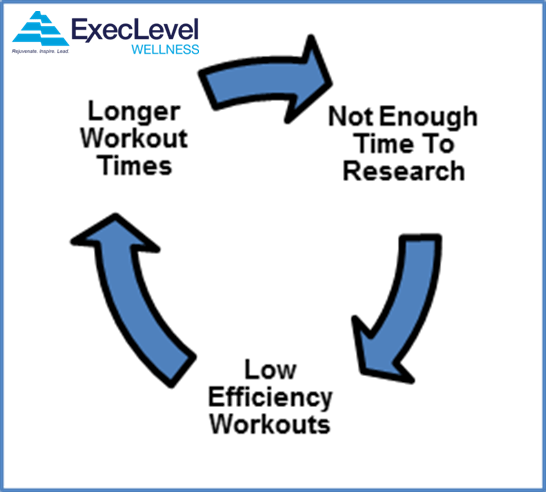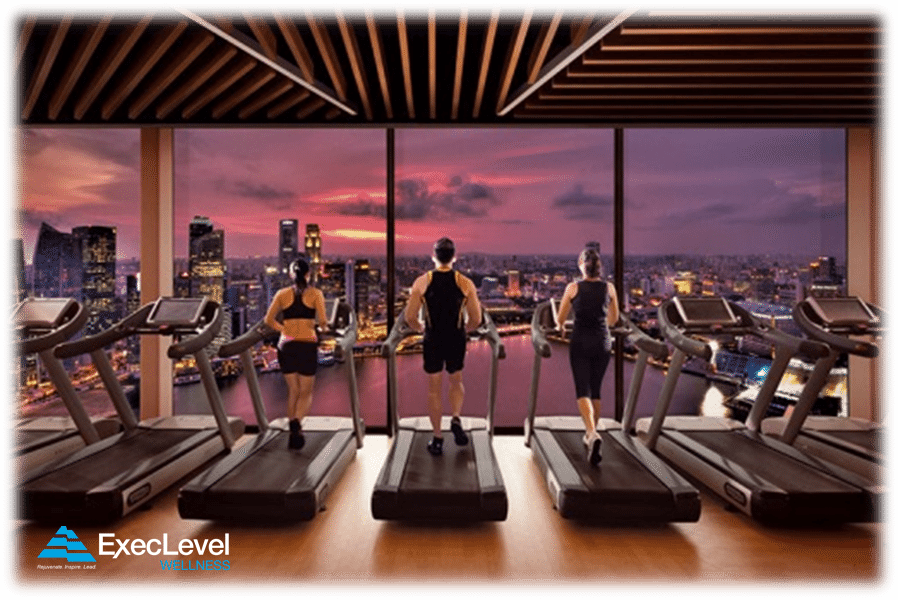
The “Fitness Paradox” is a vicious cycle. It starts with not having enough time to effectively research a fitness routine, which leads to low gains when working out and correspondingly longer workout times. It ultimately returns back on itself, with trying to find an efficient routine. Obviously, the cycle is oversimplified, and does not include materials costs for memberships and equipment, or the frustration of not reaching your expectations. Over time, and we’ve seen this repeatedly, people begin to develop a start – and – stop rhythm, where they’ll find something new, try it, and then fall back out of it because of time versus results.
Now, what must be understood is that fitness routines are not “Magic Bullets” that can be instantly adopted to produce miraculous results. They are in fact “Routines” in the formal sense, which are practiced over the long-term in a regular manner. The keys to their success are efficiency and versatility. An efficient fitness routine – for the active professional – should not consume huge amounts time. Optimal routines range from 15 – 45-minutes/workout and are practiced 3-6 times a week. They must also be portable and practiced as easily on-the-road as they are at home. A versatile routine is balanced, and able to work the entire total body in (generally) a weekly rotation. Versatility also goes towards the objective of the routine – i.e., is it flexibility, strength, muscle growth, weight loss (in combination with good nutrition), cardiovascular, etc.? These different objectives usually require a portfolio of different Fitness Programs that are intermixed on a 30-90 day cycle. An added benefit of cycling routines is the elimination of complacency (boredom) when becoming too familiar with repeating the same workout endlessly.
Speaking from experience, the benefits of developing this long-term, efficient and versatile outlook become apparent in retrospect. First, working out becomes fun, something you actually look forward to doing. Second, it becomes rote, and you can do sets, mixed and even full routines from memory (i.e., you can perform a rigorous workout even when you’ve forgotten your mobile device). I  enjoy this aspect because very often when on the road I will work out in the hotel gym. More times than not someone else in the gym, who is on the exercise bike or doing some random weights, will ask me what I’m doing. It strikes up a conversation and I’ll generally show them what I’m trying to accomplish (and why). At the same time it gives me a chance to see what they’re up to. Good conversation and a chance to learn – which is half the reason I left the hotel room in the first place. Now on this last note, a typical day on the road (for me) is a scientific conference, which entails giving and watching lectures pretty much from 9 to 5. The evenings are devoted to socializing – dinner and conversation. In between, I find a good way to recharge is a workout like I’ve just described. It usually takes no more than half-an-hour (an hour if the hotel has a sauna), after which I’ll shower up and am ready for the evening. A high compliment from people –many of whom I’ve seen at these conference for over two decades – is that I look fit.
enjoy this aspect because very often when on the road I will work out in the hotel gym. More times than not someone else in the gym, who is on the exercise bike or doing some random weights, will ask me what I’m doing. It strikes up a conversation and I’ll generally show them what I’m trying to accomplish (and why). At the same time it gives me a chance to see what they’re up to. Good conversation and a chance to learn – which is half the reason I left the hotel room in the first place. Now on this last note, a typical day on the road (for me) is a scientific conference, which entails giving and watching lectures pretty much from 9 to 5. The evenings are devoted to socializing – dinner and conversation. In between, I find a good way to recharge is a workout like I’ve just described. It usually takes no more than half-an-hour (an hour if the hotel has a sauna), after which I’ll shower up and am ready for the evening. A high compliment from people –many of whom I’ve seen at these conference for over two decades – is that I look fit.
